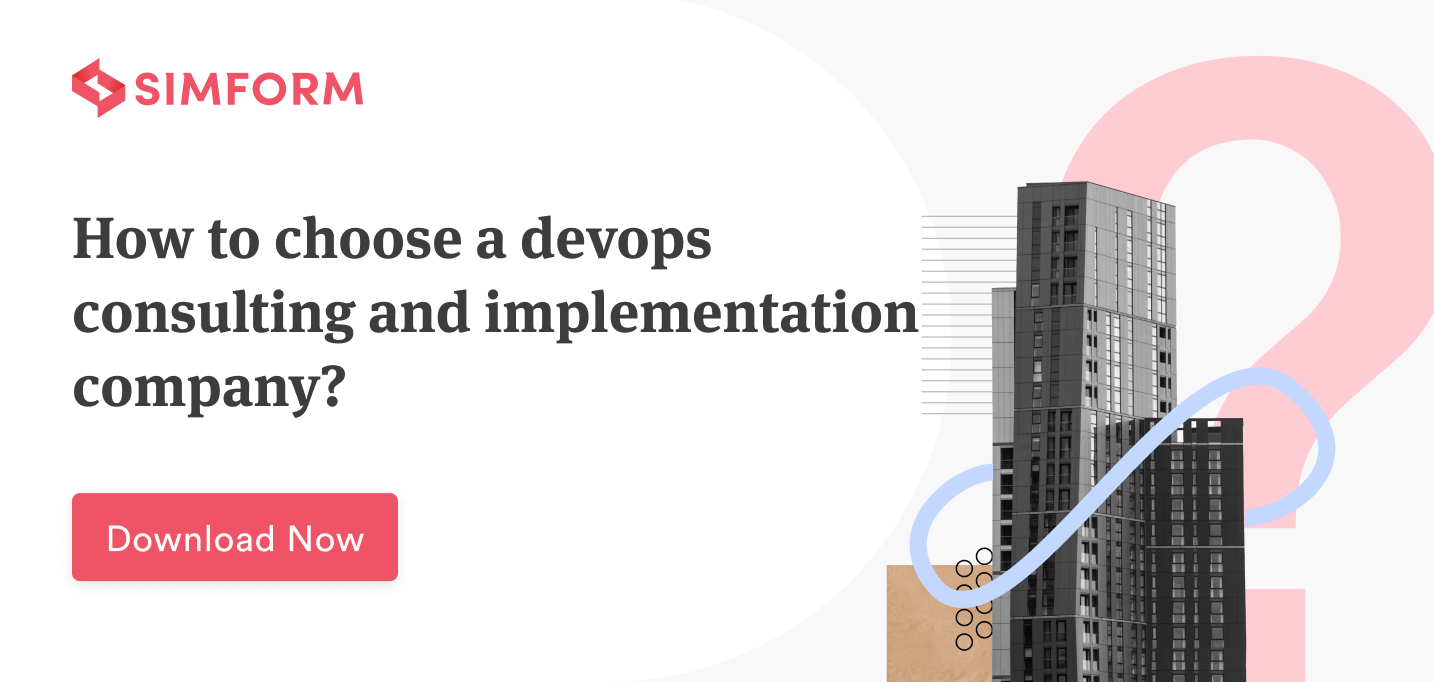The global DevOps market is expected to grow at a healthy CAGR of 22.9% from 2020-2027. And the reason this software development and delivery model has such a promising future is because it has already delivered impressive results for CTOs globally.
The DevOps approach aims to eliminate traditionally siloed structure for development and operations teams to enhance collaboration between them. As a result, DevOps has many business and technological advantages, including shorter development cycles, increased deployment speed, reduced time to market, and more.
However, adopting DevOps is no piece of cake and it demands an organization-wide cultural change. But, as with any methodology, there are some tips and principles that you can follow for a smooth adoption of DevOps over time. This blog will discuss DevOps best practices that will ease your DevOps journey and help you attain more benefits out of it.
DevOps Best Practices to Follow
1. Build a collaborative culture and mindset
DevOps is a culture whose implementation will require an organization-wide, positive cultural change, starting with cross-team communication and collaboration. The whole gist of DevOps is to eliminate silos between departments and improve collaboration which does not happen overnight.

As you start your DevOps journey, you will encounter differences from the current software delivery approach. Thus, a healthy DevOps best practice is to modify the existing team structures, habits, and workflows. Such transformation can help eliminate barriers to successful collaboration. Moreover, facilitating increased communication between teams will help build trust and transparency and instill an attitude of shared responsibility and ownership.
Let’s look at how Etsy gradually transitioned from a traditional waterfall to a DevOps culture. Etsy struggled with sluggish deployments that often caused its site to go down in its initial years. Any downtime impacted the sales of millions of Etsy’s users and drove them to competitors’ websites.
Etsy had to do a full-site deployment every time they wanted to change the banner on the homepage, which was twice a week. It would take four hours and be painful for everyone involved. They had a DevOps-like realization that if they had a tool that allowed anyone from engineering or ops to change the homepage with a click, it would make the process better for everyone. It sparked a lot of communication within the teams, and gradually Etsy developed a DevOps culture without a separate DevOps team in the organization. Such commitment to collaboration across teams enabled Etsy to easily deploy code more than 60 times per day.
2. Practice Agile methodology
Agile has been in practice for decades, and there are hardly any non-Agile enterprises today. It is also a prerequisite for introducing DevOps.
Agile is an iterative software development and project management approach that helps teams deliver softwares faster with fewer glitches. Here, teams break a project into small chunks and focus on delivering incremental features faster than waiting for a single big release. Moreover, the requirements of customers, plans, and results are continually analyzed. It allows teams to respond to the feedback and make necessary changes as they progress.

Combining DevOps best practices with the Agile approach takes the development process up one notch and enables faster deployment. By bringing operations teams into the Agile fold, engineers can get end-user feedback faster and iterate on it. In addition, DevOps naturally reinforces Agile thinking by facilitating constant communication and collaboration between the development and IT operations teams.
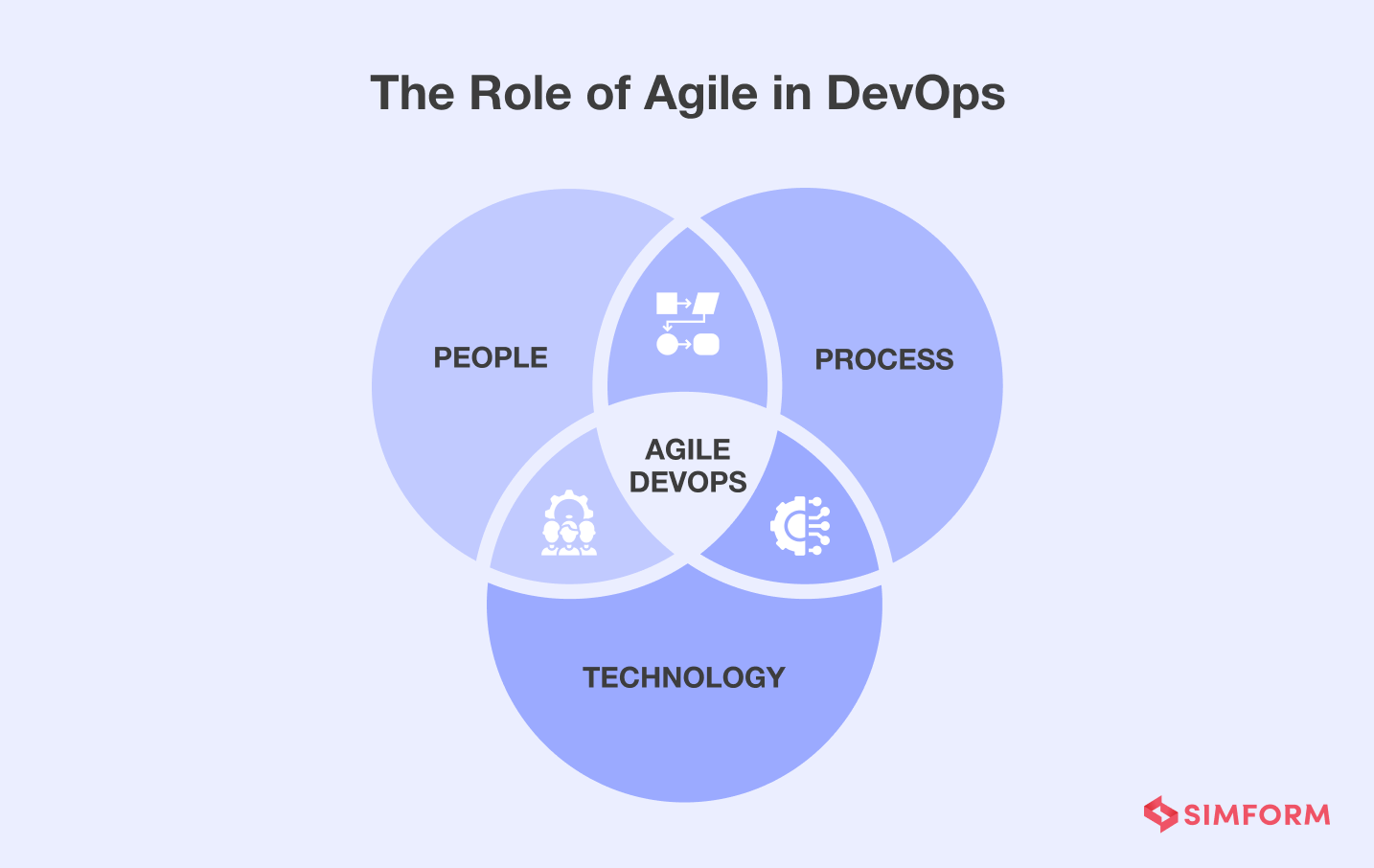
From a cultural perspective, both Agile and DevOps embrace change and prioritize customer satisfaction. Additionally, DevOps extends the principle of Agile beyond the software team, making it the next logical step to streamline the operations further, save costs, improve product quality, and deploy faster.
3. Automate with CI/CD
Automation is fundamental to DevOps culture. And having a CI/CD pipeline helps automate the entire coding, building, testing, and launching process. It helps accelerate the development cycle, pushes code into production frequently, and produces reliable, safe softwares
Continuous Integration (CI) allows developers to merge code regularly into a central repository and uses automated tools to check the code’s correctness. And Continuous Delivery (CD) tools automate the releases from the source repository and ensure they are frequent, seamless, and predictable. With CI/CD, even the large complex softwares can be deployed
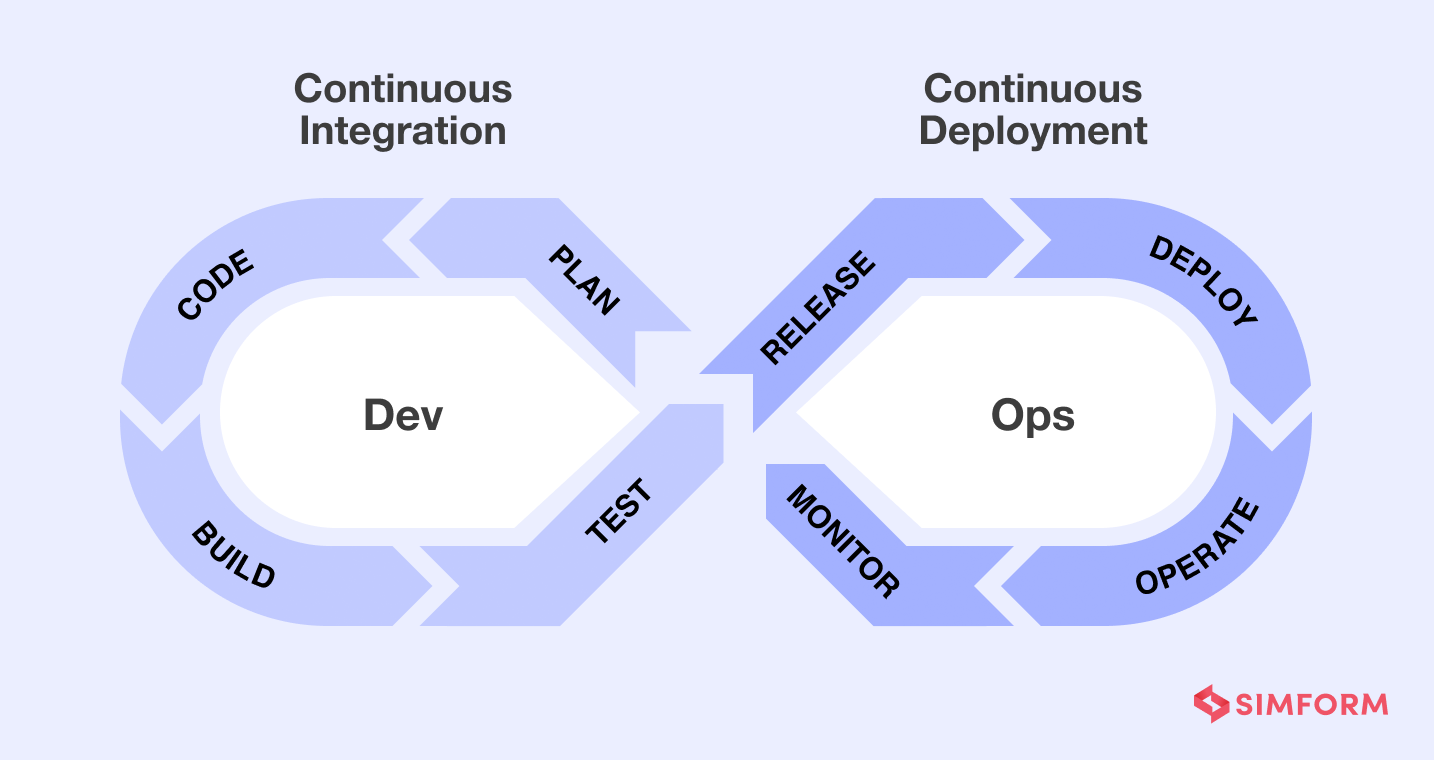
However, implementing CI/CD requires huge effort and investment. But it can have a substantial positive impact if done correctly with the following CI/CD best practices for DevOps:
- Maintain a single source code repository
- Automate the build process
- Test in a clone of production environment
- Adopt a “shift left” approach, meaning start testing early and often during code development. Shifting the test process to the left in the DevOps pipeline helps produce faster test runs and offers superior insights. It also helps shorten the feedback loops between developers and users.
- Gather continuous feedback and ensure fast feedback is available to developers as quickly as possible
- Prioritize fixing broken builds
- Integrate security early and throughout the development and testing process
- Enable continuous deployment and automate the process
- User version control tools/system
- Parallelly automate infrastructure configuration management and performance monitoring to better control the software running in production.
Let’s take the example of how DevOps at Simform helped Fédération Internationale de Hockey, known as FIH, develop a powerful website in a timeframe of just three
FIH wanted to launch a powerful website before Hockey World Cup 2018, the biggest event in the organization’s history, with more than 3 million viewers in Asia alone. Therefore, the website architecture had to be scalable and flexible enough while following GDPR guidelines. We assisted them in cloud migration, and our DevOps team set up CI/CD pipeline to improve deployment times and enable faster releases. We used the Jenkins framework to incorporate CI, which led to improved delivery quality and process
The result: We successfully delivered a fully tested, performant website before the event. The website was equipped to handle thousands of visitors, helped gain traffic, and increased repeat readers.
Click here to read the entire case study on FIH website development
4. Implement test automation
Test automation is an essential DevOps best practice as it enables continuous testing in the DevOps lifecycle. Continuous testing refers to testing early in the pipeline, testing often, and testing across different environments and devices. It aims at ‘failing fast’ to catch bugs early as they are easier and cheaper to fix earlier in the pipeline. As a result, continuous testing helps deliver quality softwares at high speed, with lower costs and lower
Automated tests might include various kinds of tests such as unit tests, integration tests, functional testing, end-to-end testing, and performance testing. Automation frees up testers from repeating mundane tasks so they can come up with innovative test cases and work with developers to prevent errors. It also involves recognizing test case scenarios, prioritizing test cases, picking the right automation tools, setting up environments, and evaluating results.
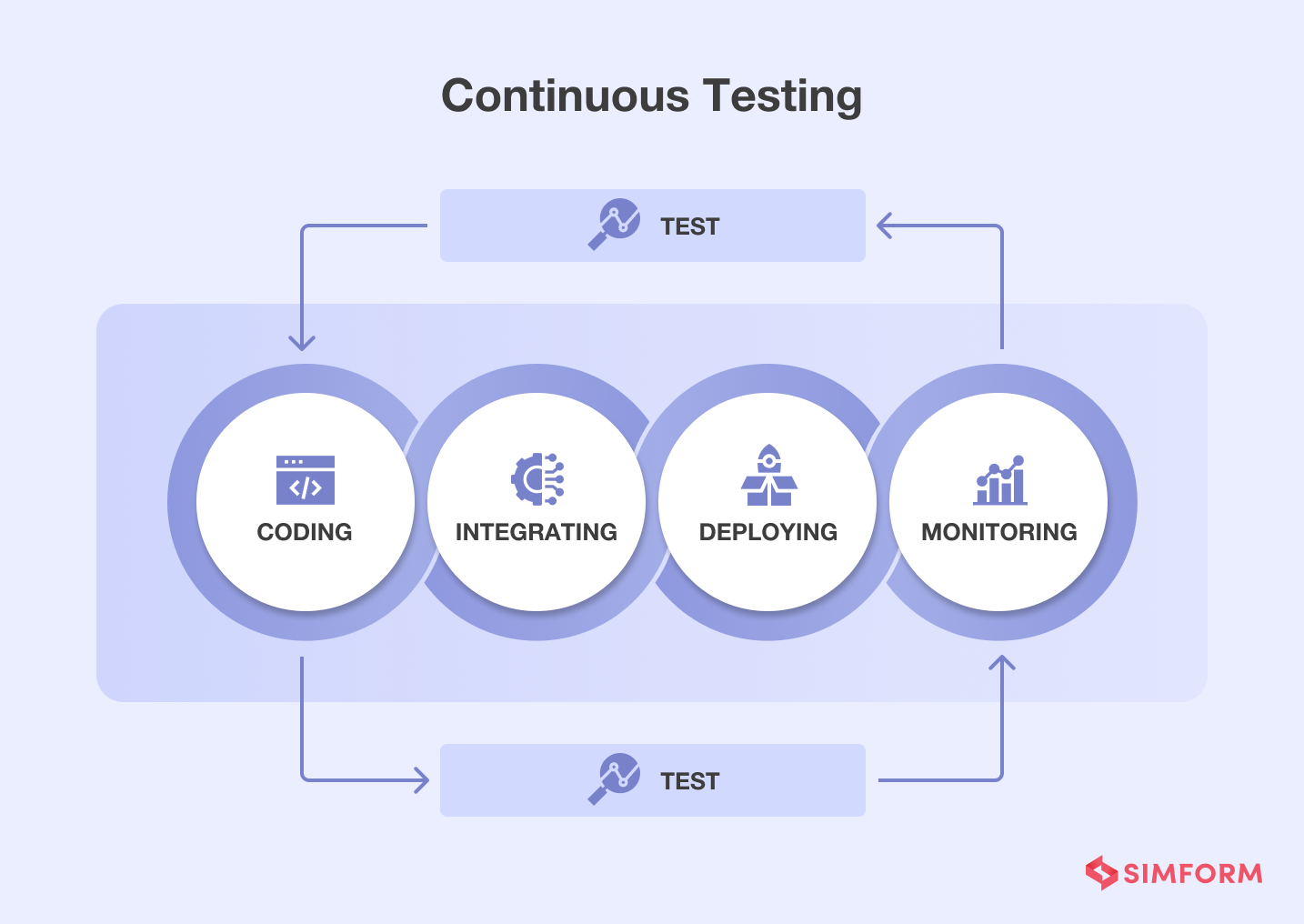
Let’s see how Netflix used automated testing to identify and resolve errors before impacting its users proactively. After migrating to the cloud, Netflix formed a Simian Army, a suite of automated tools to stress-test its infrastructure and deal with unexpected errors or outages.
One of the first tools introduced in the suite was Chaos Monkey. Simply put, it is a script that runs continuously in all Netflix environments and creates chaos by shutting down random instances. It prepares them for every possibility by causing it and developing a highly-resilient infrastructure. The chaos also offers developers the opportunity to test their code in unexpected failure conditions and incentivize them to engineer fault-tolerant systems on a day-to-day basis.
However, Netflix no longer maintains the Simian Army project. But a newer version of Chaos Monkey is still functioning as a standalone service.
5. Switch to microservices architecture
Microservices architecture divides large, complex applications into simple, independent projects. The individual components, scoped to a single purpose, operate independently of each other and the application as a whole. They are deployed as independent services and communicate using application programming interfaces (APIs).
The Microservices approach of building applications reduces the overhead of coordinating for updating applications as the teams take ownership of each service. It is used by organizations for flexibility and enabling quicker innovation. It also removes SPOFs (single points of failure) by ensuring one service does not impact the other parts of the application, as opposed to monolithic architecture.
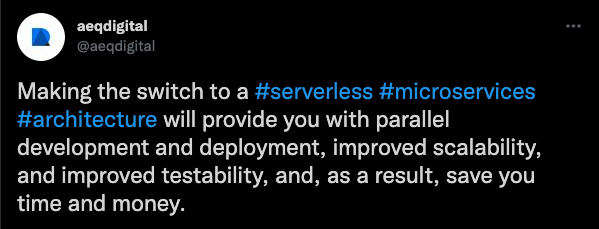
Uber initially had a monolithic architecture in place but faced a few challenges. For instance, to update a single feature, they had to build, deploy and test every feature many times. Moreover, fixing bugs and scaling was also tricky. So Uber transitioned to microservices to avoid such problems. And today, their architecture comprises a few thousand microservices, each functioning independently. In addition, companies like Netflix, Amazon, Spotify, Etsy, etc., also successfully use the microservices architecture.
Microservices architecture also fits perfectly with the DevOps framework. DevOps teams can package individual functionalities in microservices and then build larger applications by composing the microservices like building blocks. The teams can also add new functionalities without affecting the other parts of the application. In addition, DevOps best practices such as CI/CD are used to drive the deployment of microservices to avoid operational challenges and ensure speedy, steady deployment.
6. Practice container orchestration
Container platforms such as Docker are prevalent these days, mainly to implement microservices. They allow isolation, packaging, and easy deployment of microservices. They are also highly scalable and can be created on-demand. But what happens when you have to manage hundreds of containers and their numbers dynamically increase with the demand?
With the rapidly growing number of containerized applications, managing them at scale as a part of the CI/CD or DevOps pipeline is impossible without automation. Enter container orchestration.
It automates operational tasks around running containerized applications or services. For instance, it automates the scheduling, deployment, load balancing, scalability, and networking of containers. According to recent research by IBM, 70% of developers reported using container orchestration solutions for container lifecycle management, and 70% of those reported using fully-managed container orchestration service (cloud-managed) at their organization. At Simform, we use container orchestration tools such as Docker, Kubernetes, and ECS for AWS.
Moreover, due to the very nature of container technology, development teams can easily share their software and dependencies with IT operations and production environments. Thus, it eliminates the “it works on my machine” excuse. Indirectly, it brings the developers and operations team closer, allowing them to collaborate effectively. Container technologies like Docker and Kubernetes also enable continuous deployment by helping maintain consistency of code across multiple platforms and environments, simplifying DevOps.
Explore Our Containerization and Orchestration Services
7. Use Infrastructure as Code
Infrastructure as Code (IaC) is used during various phases of DevOps to automate provisioning and management of infrastructure needed for a software release. This model generates the same environment every time it is applied and thus, helps in consistently creating repeatable infrastructure. It also eliminates the need to manually provision and manage servers, operating systems, storage, database connections, and other infrastructure elements.

IaC is a key DevOps best practice due to its capacity to create and version infrastructure using the same versioning DevOps teams use for source code. It is also used in conjunction with CD and enables DevOps teams to test in production-like environments early in the development lifecycle. At Simform, we use Terraform and AWS CloudFormation for IaC solutions.
For instance, in our FIH project mentioned earlier, we used CloudFormation to manage and maintain the AWS cloud infrastructure. It helped create and manage a collection of AWS resources easily. And it also helped in provisioning and updating them in a predictable and orderly fashion. As a result, all the CI/CD and infrastructure provisioning workflows were implemented “as code” with a YAML-based configuration stored and versioned in Github.
Configuration management is another vital DevOps best practice for infrastructure management. It uses code to automate all infrastructure entities and systems’ configuration, monitoring, and other operational tasks. It benefits teams and saves time by simplifying new environments setup and reducing production configuration risks.
When practiced in conjunction with IaC, it can help teams operate complex environments at scale. At Simform, we use Ansible, Chef, and Puppet for configuration management.
Now Infuse productivity and high ROI into your infrastructure management
8. Have a security-first approach: DevSecOps
Security can never be overemphasized in scenarios where security breaches and vulnerabilities can lead to massive financial losses and damaged corporate reputation.
As a CI/CD system requires providing access to code bases and credentials for deployment in various environments, it can become a primary target for attacks. Thus, it is not practical or efficient to prioritize fast releases and implement security at the end. So instead, it should be baked into DevOps pipelines from start to finish, also termed DevSecOps.

Capital One, a Fortune 500 company and a widely recognized financial brand in America, presents a remarkable implementation of DevSecOps. While embracing DevOps to strengthen their tech, Capital One also embedded automated security checks into its DevOps pipeline. As a result, the code generated in the pipeline is certified as secure and released into production without unnecessary delays. The effort dramatically sped up the process of detecting vulnerabilities and misconfigurations in its containers and virtual machine images. Overall, it enabled Capital One to improve its digital offerings continuously and quickly.
Security automation is also a core DevOps best practice and can be easily integrated into CI/CD pipeline. It helps execute security validations for every code you release to ensure it is not vulnerable or has security breaches. You can also isolate CI/CD systems and place them on secure internal networks. Moreover, VPNs, strong two-factor authentication, and identity/access management can also help limit exposure to threats. At Simform, we use SonarQube in CI/CD and OWASP while developing to improve security.
9. Implement version control and tracking
Both development and operations teams should use version control for everything. It is a DevOps best practice for managing code in versions to allow tracking of revisions and change history so that the code is easy to review and recover. It also provides a smooth process to merge changes in code within the same files, handle conflicts and roll back changes to previous states.
It is implemented using version control systems like Git, allowing multiple developers to author the source code and create a “single source of truth” for the team. At Simform, we use tools such as Bitbucket, Github, and GitLab.
Implementing version control is essential to DevOps. It helps development teams work together and divide coding tasks between the members while storing all the code in a shared repository for easy recovery when needed. It is also a fundamental element in DevOps best practices such as continuous integration and IaC.
Let's Understand How Netflix Became A Master of DevOps?
10. Continuous monitoring with the right metrics
Continuous monitoring means having complete, real-time visibility into the health and performance of your entire stack. It is a must to measure the effectiveness and success of your DevOps approach. Continuous monitoring works by collecting event data, logs, and metadata from various system parts and storing them for analysis and query. It also involves setting alerts for predefined conditions to warrant attention from an operation.
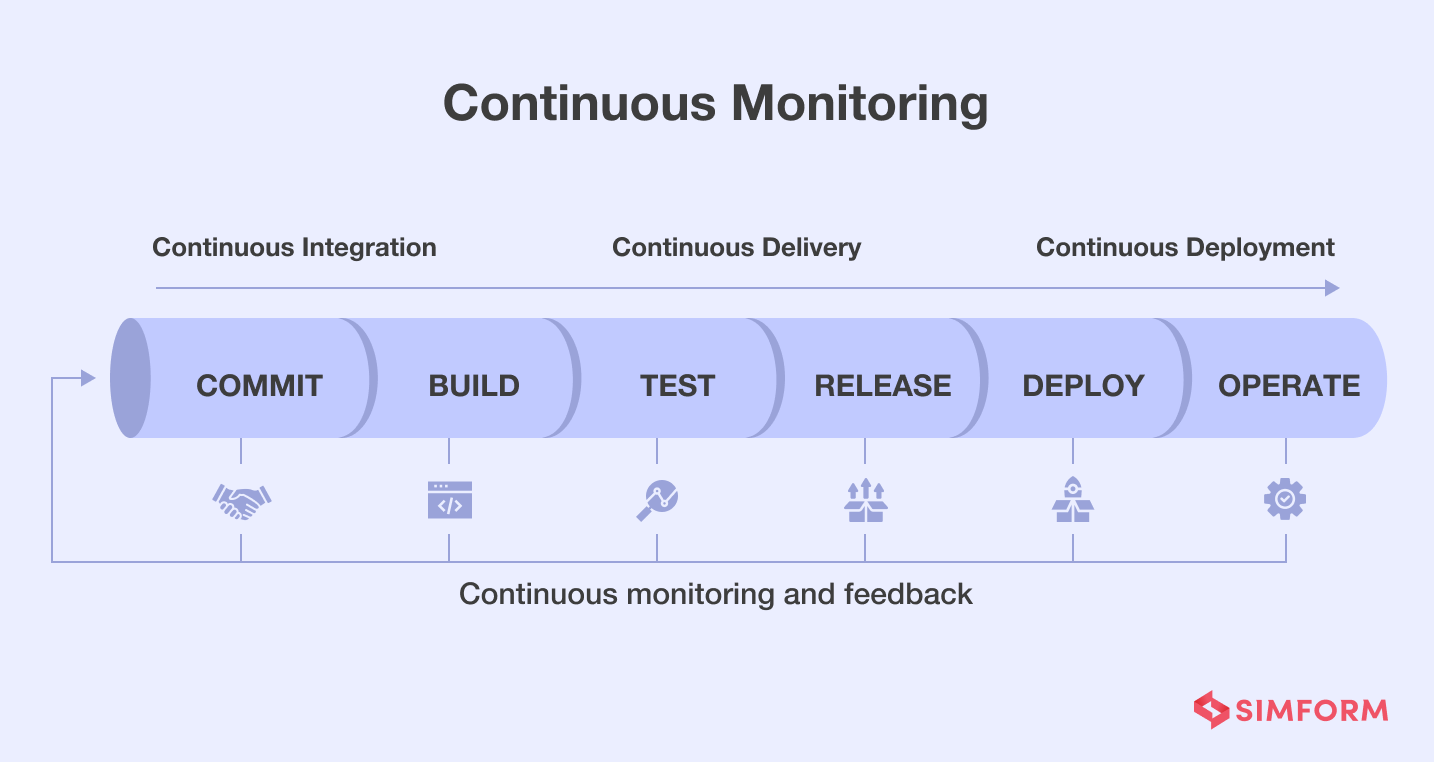
High-performing DevOps teams must ensure they monitor with the right metrics to draw out superior insights and help teams mitigate issues in real-time. There are multiple performance metrics you can track to gauge the efficiency of DevOps in your organization. Some essential metrics are lead time, deployment time, frequency of deployment, mean time to detect, mean time to repair, and more. Metrics such as unit cost also help teams build cost-optimized softwares as they are tied to profitability. To assist continuous monitoring, we use services including Amazon Cloudwatch, Prometheus, and Grafana at Simform.
Pro tip: The best approach to finding the right and relevant metrics for your organization is to identify the outcomes you want to achieve. And then find the DevOps metrics to monitor and measure those outcomes.
11. Choose your DevOps tools wisely
Your DevOps toolset is a set of solutions required for each phase of the DevOps lifecycle. And with a variety of tools available in the market, it is a crucial DevOps best practice to choose an optimal combination of tools and do not overcomplicate your processes with too many tools. After all, it will directly impact your organization’s software quality and delivery speed. Therefore, to pick the right DevOps tools, you must:
- Prioritize processes over tools
- Refrain from copying some other company’s DevOps or automation solutions blindly
- Select tools that are compatible with your IT environment, tech stack, and cloud provider
- Select a toolchain that integrates seamlessly
However, organizations and teams might need to experiment with different tools or combinations to find the right solutions that suit their needs.
Simform provides top-notch DevOps services
Employing the DevOps best practices enumerated above in your DevOps transformation will help you realize its full potential. However, becoming a truly DevOps company is a gradual process and doesn’t happen overnight. But with the right skills, experience and DevOps best practices, you can wisely implement it in your project.
Simform offers DevOps services and solutions to help your business grow and maximize efficiency. Our teams excel in DevOps implementation, and our seasoned experts can help you build a roadmap to implement DevOps with the right tools and consulting. So get in touch with us today to avail our expert DevOps services!
